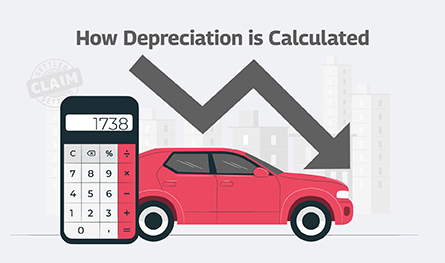BS4 vs BS6 Engine – What is the difference between BSIV and BSVI engine?
.png)
As per the new mandate by the Central Government, it is imperative for all motor vehicles manufactured and sold after 2020 to comply with BS6 engine norms as against the current BS4 being used. Here’s what has changed moving forward.
.png)
Air pollution has become a harsh undeniable reality of today. With Diwali just around the corner, this fact stares us in the face more than ever. Perhaps a good time to take a closer look at this health hazard that’s slowly but surely impacting the health of millions of people in the country, even children. The central government, on its part, has now decided to introduce some stringent measures to control air pollution considerably. Mandating the use of BS6 engine for all two- and four-wheelers is a step in this direction.
Before we move on to discussing more about BS6 engines and how they are better than the earlier BS4 engines used for vehicles, let us understand a little about the BSES regulations with regard to controlling the level of air pollution emitted from vehicles.
What are the BSES Regulations Regarding Control of Vehicular Pollution?
BSES stands for Bharat Stage Emission Standards which have been specified by the Indian central government in an attempt to keep toxic emissions from motor vehicles, which contribute to air pollution in the country, under check.
According to these regulations, it has been mandated by the central government of India that all manufacturers of two-wheelers and four-wheelers both, must manufacture, register, and sell only the BS6 (BSVI) engine, effective April 1, 2020.
These regulations have been prescribed keeping in view the rising air pollution levels in India and are an attempt to regulate them to the maximum. Also, note that before the use of BS6 engine was mandated by the government, the vehicular industry had been using the BS4 engines in its two- and four-wheelers.
Let us understand what changes do BS6 engines bring about over the BS4 engines.
Difference Between BS4 and BS6 Engine
Before the BS6 engine was mandated by the government with effect from 2020, the two and four-wheeler industry had been using the BS4 engines. These engines came with some strict regulations and emission standards prescribed by the BSES with a view to keep a healthy check on vehicular emission contributing to air pollution in the country.
If the BSIV engines had stringent norms, the BS6 definitely kicked things up a notch. The upgraded engine parameters in the BS6 engine aim at a much cleaner environment and lesser pollutant emission.
The following table enumerates exactly how the BS6 engine is an upgrade over the BS4 one and the key differences between bsiv vs bsvi engines:
| Key Difference Parameters | BS4 Engine | BS6 Engine |
| Emission of NO2 | Not more than 80mg/km allowed | Permissible only up to 60mg/km |
| Sulphur content in the engine | 50ppm | 10ppm |
| Inclusion of SCR and DPF to assess emission levels | Selective Catalytic Reduction (SCR) and Diesel Particulate Filter (DPF) not included in the BSES emission standards | SCR and DPF included to assess emission levels of the engine |
| NO2 Permissible Emission Limit in Diesel Vehicles | 250mg/km | 80mg/km |
| Addition of Onboard Diagnostic (OD) | Considered unnecessary in BS4 engines | Added to the BS6 engine standards |
| Lubrication | Only Sulphur was used as the prime lubricating element, which discharged more number of pollutants | Sulphur was replaced with Sulphur-like lubricating elements to improve engine performance |
| Real Driving Emission Standards | Could not be determined in BSIV engines | Stringently implemented to track real-time emission of pollutants |
| Limit of Particulate Matter (PM) in Petrol Vehicles | 0 | <4.5mg/km |
| Limit of Particulate Matter (PM) in Diesel Vehicles | 25mg | <4.5mg/km |
| Limit of Hydrocarbons + NO2 in Diesel Vehicles | 300mg | 170mg/km |
Regulating Not Just Engines But Vehicle Registrations Too
We learned above about the Bharat Stage Emission Standards (BSES) that regulate emission of pollutants from vehicles, applying uniformity in engine specifications via the BS6 engines. The latest reports suggest that there is yet another uniformity introduced by the body with regard to vehicle registration.
The Bharat series vehicle registration removes the obligation on the vehicle owner to re-register their vehicle after moving to another state in India. As you may be aware, registering your vehicle as per the new state norms can involve a lot of time and hassle. To save the vehicle owners from the trouble, the Bharat series registration has been introduced which ensures that the same Bharat series number plate is uniformly applicable and acceptable across India.
However, it must be noted that the Bharat series vehicle registration is not meant for all. It is only applicable at the moment to non-transport vehicles and for employees of the central and state government who find it difficult to re-register their vehicles each time with a transfer from one state to another.
In a Nutshell
With a view to provide the maximum convenience and welfare to the country, the central government is coming up with various directives from time to time. The introduction of BSVI engines and the Bharat series number plates reflect just that.
It is equally our duty towards our country to act responsibly by driving safely and buying motor insurance upon purchase of a new vehicle (whether two-wheeler or four-wheeler). By buying a motor insurance policy, such as bike insurance or car insurance, you can safeguard your vehicle against any unforeseen circumstances in the future.
For the best deals on motor insurance for your dream vehicle, look up PayBima. The website has several best offers on the finest motor insurance companies that would provide just the right policy for your needs. Also note that vehicles that comply with the BS6 engine norms are generally offered motor insurance at low-priced premium rates. This is done to encourage more and more people to comply with the upgraded engine specifications as set by BSES and thereby contribute to lesser air pollution in the country.
FAQs on Difference between BS4 and BS6 engine
The Government of India has established two emissions regulations for automobiles: BSIV and BSVI. The fourth stage of the Indian government's emissions limits, known as "Bharat Stage IV," went into effect in 2017. The sixth stage of emissions rules, known as BSVI (Bharat Stage VI), will go into effect in 2020. The primary distinction between the two is that BSVI has stronger emission limitations than BSIV, especially for particulate matter and nitrogen oxides (NOx) (PM). As a result, cars that adhere to BSVI will produce less pollution than those that adhere to BSIV.
The Indian government has established an emissions regulation for cars called BSIV (Bharat Stage IV). Following its implementation in 2017, the Indian government's emissions guidelines have reached their fourth level. Both four-wheelers and two-wheelers are affected. The norm is based on the European Union's Euro IV emissions regulations.
Hydrocarbons, nitrogen oxides (NOx), and particulate matter (PM) are just a few of the pollutants that BSIV engines are meant to eliminate (HC). Vehicles must have cutting-edge pollution control systems, such as catalytic converters, diesel particulate filters (DPFs), and exhaust gas recirculation (EGR) systems, in order to comply with these criteria. The major objective of BSIV is to improve air quality by reducing the quantity of pollutants discharged into the environment.
Bharat Stage Emission Standards, sometimes known as BSVI, is an acronym. The Indian government imposes them in order to control the emissions that automobiles emit. The benchmark for these emissions is determined by the Central Pollution Control Board, which is overseen by the Ministry of Environment, Forestry, and Climate Change.
Since BS6 fuels contain less sulphur than BS4 fuel and produce less emissions or other forms of pollution, they are significantly cleaner. According to BS6 standards, NOx emissions must not exceed 60 mg/km (nitrogen oxides). For BS4 regulations, the value was 80mg/km.
Its BS4 version formerly produced 22 kmpl of fuel economy that was ARAI-certified. The BS6-compliant one's fuel economy, however, has decreased to 21.21kmpl. Although the 0.79 km/l difference between the two is small, the move to BS6 is to blame.

Author Bio
Paybima Team
Paybima is an Indian insurance aggregator on a mission to make insurance simple for people. Paybima is the Digital arm of the already established and trusted Mahindra Insurance Brokers Ltd., a reputed name in the insurance broking industry with 21 years of experience. Paybima promises you the easy-to-access online platform to buy insurance policies, and also extend their unrelented assistance with all your policy related queries and services.
Other Motor Insurance Products
Latest Post
.jpg)
Having a bike is not just about convenience, it’s a huge responsibility. Financial protection of your two-wheeler is important and the best way to ensure that is to have a bike insurance policy that will protect you in case of an accident, theft or a natural calamity. There are so many options when it comes to policies, making it difficult to know what’s best. This guide makes it easier to choose the best bike insurance policy that is suitable for you.


Non-linked, non-participating term plans are the ones that do not participate in the business and profit of the insurance company. These are fixed premium plans where the policyholder pays a fixed amount to ascertain a guaranteed sum as a return to be paid to the nominee in case of his/ her demise. Let’s learn more in this post.


Car depreciation implies the difference between the cost of a car at the time of buying the car and when you sell it. A car insurance claim amount is determined by the car depreciation rate. The car depreciation rate is the reduction in the value of your car over its lifespan caused by wear and tear.


Have you ever caught yourself lost in illusions about your daughter's future events, such as her university convocation and first day at work? Her university convocation. When she embarks upon her initial job after graduation will be the day.

.png)
Accidents can happen anywhere, anytime, by your own fault or another person. What’s important is to be prepared for such mishaps. This is where Own Damage Car Insurance comes in handy.




